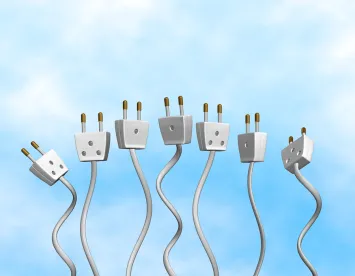On February 3, 2016, the Arizona Corporation Commission (“Commission”) by a 3-2 vote issued a Certificate of Environmental Compatibility to SunZia Transmission, LLC to construct two new 500 kV transmission lines extending from Lincoln County, New Mexico to Pinal County, Arizona (the “Project” or “SunZia”). (ACC Docket No. L-00000YY-15-0318-00171). The Project will be approximately 515 miles long with 200 miles of that in Arizona. SunZia is a joint effort lead by Southwestern Power Group but also including Tri-State Generation and Transmission Association, Shell Wind Energy, Tucson Electric Power and the Salt River Project. SunZia is a two billion dollar merchant line that will be privately financed. The Project will have capacity of approximately 2000 megawatts, 50% of which will be committed to anchor tenants and the other 50% available on the open market. Sun Edison is in discussions to be an anchor tenant. The Project received BLM approval in the form of a Record of Decision in January 2015. The Project had support of all relevant Arizona agencies such as the state land department.
Three individual intervenors and numerous public commenters opposed the Project due to the environmental impact it will have in the San Pedro River Valley in Southern Arizona. Opponents made much of the fact that the Arizona utilities did not appear in support of the project. Some of the opponents also encouraged the Commission to deny SunZia in favor of another project called Southline, which has a different route. The opponents also claimed that there are not sufficient Arizona benefits from this Project to off-set the Arizona environmental impacts.
SunZia proponents explained that it will connect wind resources in New Mexico to the grid in Arizona and allow delivery to California. SunZia maintained that there would be reliability and resource diversity benefits to Arizona as well as economic development benefits.
The proponents also pointed out that the CEC contains numerous conditions to mitigate environmental impact.
The Commission Staff was neutral on the issue of whether a CEC should be issued but acknowledged that there might be some benefits to Arizona. The Staff also acknowledged that because it is a merchant project, the risk of failure is not on the Arizona ratepayers.
Chairman Little was not convinced of the necessity of the Project. Commissioner Forese questioned the Arizona benefits from the Project. Commissioner Forese wanted to impose conditions that further approval from the Commission would be required before any power other than wind power is transmitted or before SunZia sells the Project. A member of the Arizona State Siting Committee proposed a similar condition that would have required that Project not be built until construction is started on the wind generation facility in New Mexico. This condition had been rejected by the Siting Committee.
Commissioner Burns supported the project because it will transmit energy generated without using water and he is concerned about Arizona’s water future. He also liked the fact that the ratepayers are not at risk. Commissioner Tobin supported the Project because he was persuaded by the Siting Committee’s findings that the environmental impact had been significantly mitigated and that the Project is in the public interest. Commissioner Stump supported the project because he believed it would assist the grid’s reliability. Commissioner Forese voted no because he did not think that there was sufficient Arizona benefits. He was joined by Chairman Little.
For prospective transmission line and power plant applicants, the lesson is to be prepared with plenty of evidence that your project benefits Arizona. This task is particularly challenging for merchant projects which are interstate or projects built primarily to provide power to other states. The fewer Arizona benefits, the more receptive the Commission may be to environmental and other concerns raised by project opponents.
The Project still needs to be approved by the New Mexico Public Regulation Commission.





 />i
/>i

